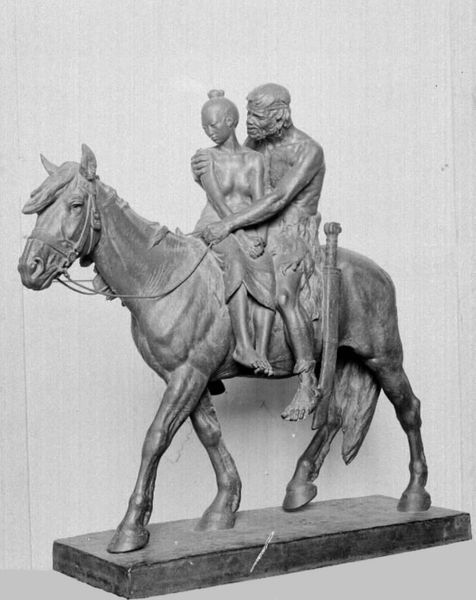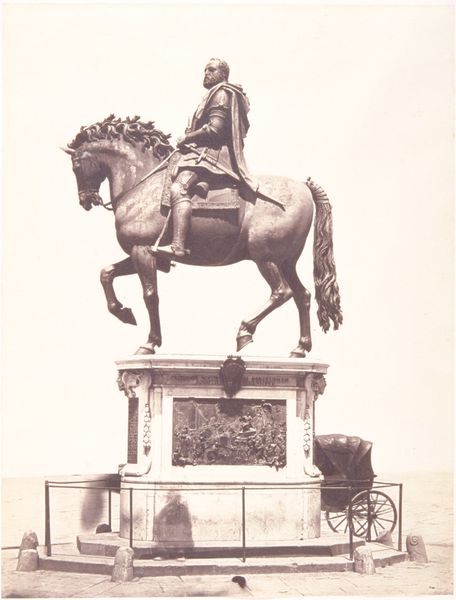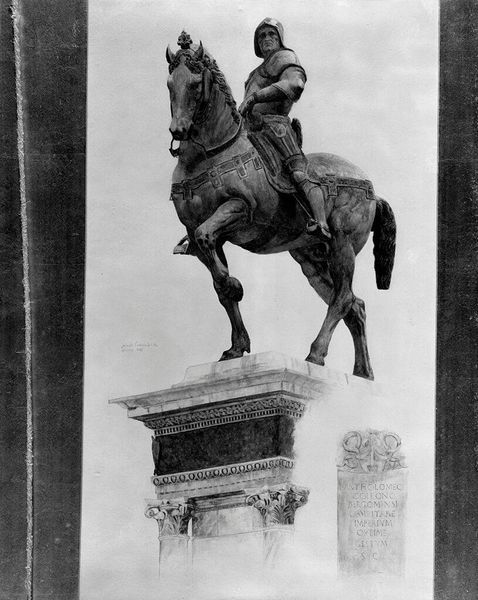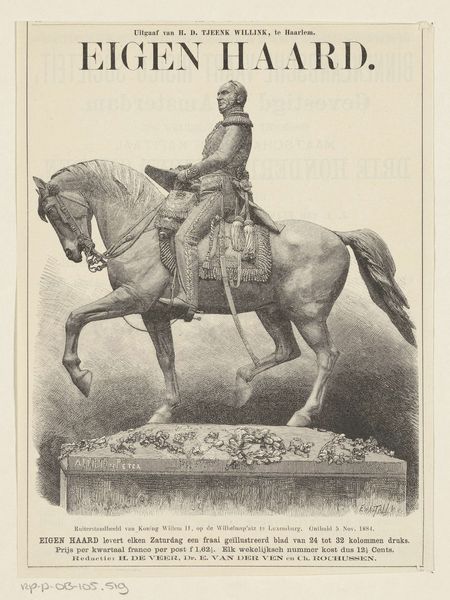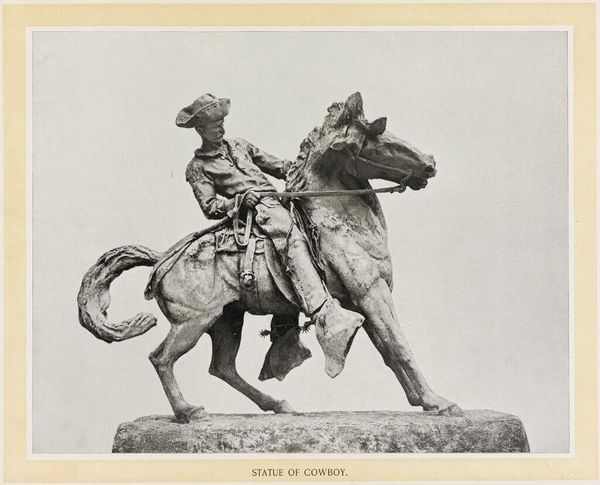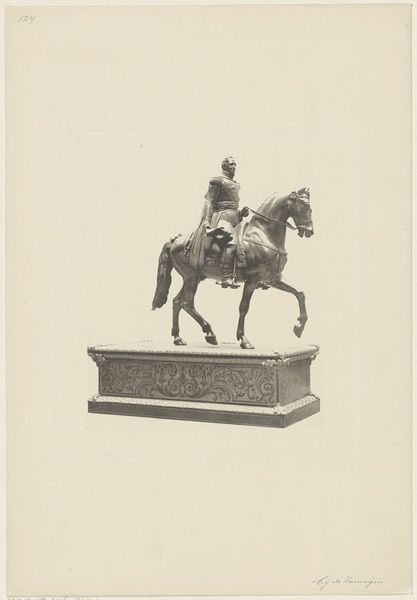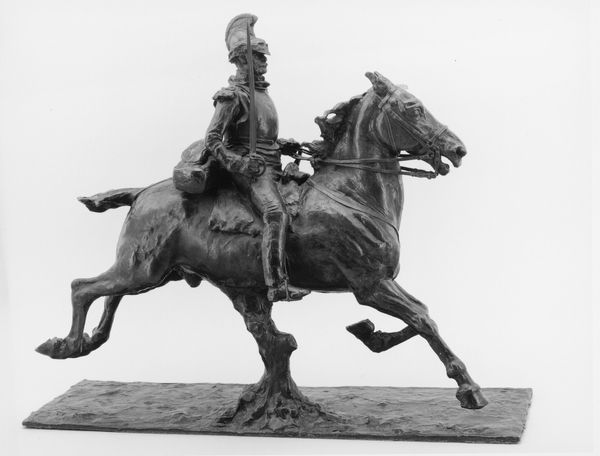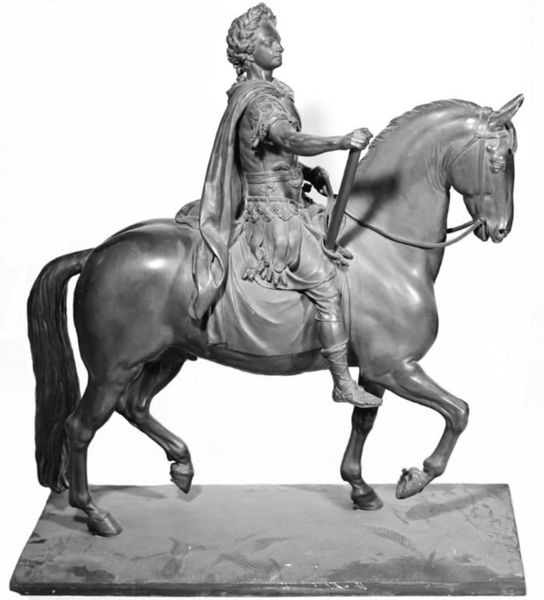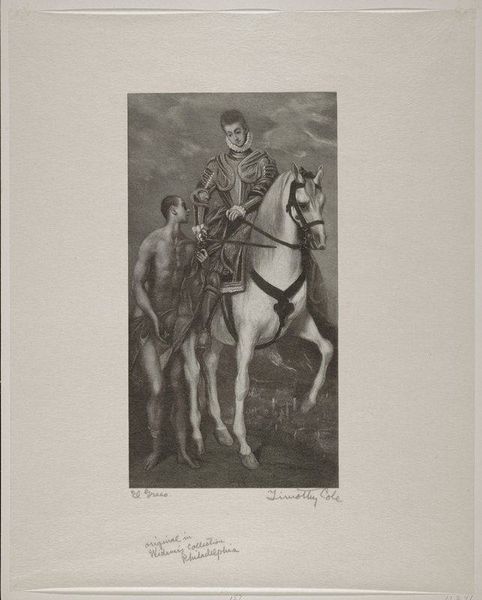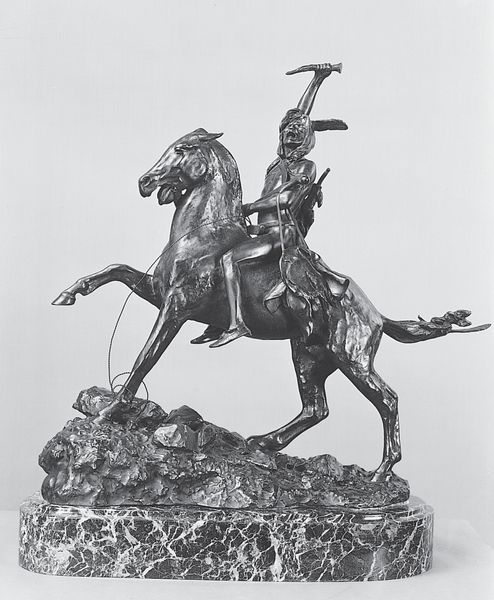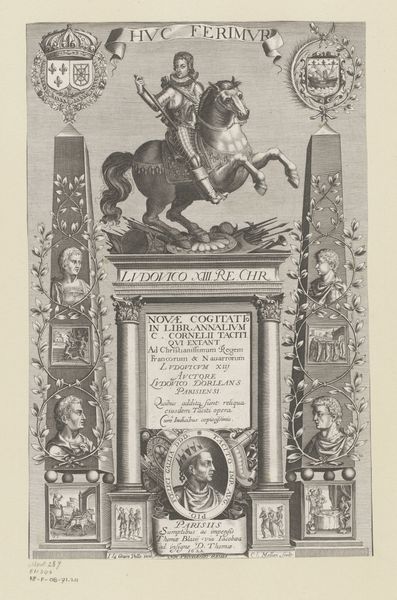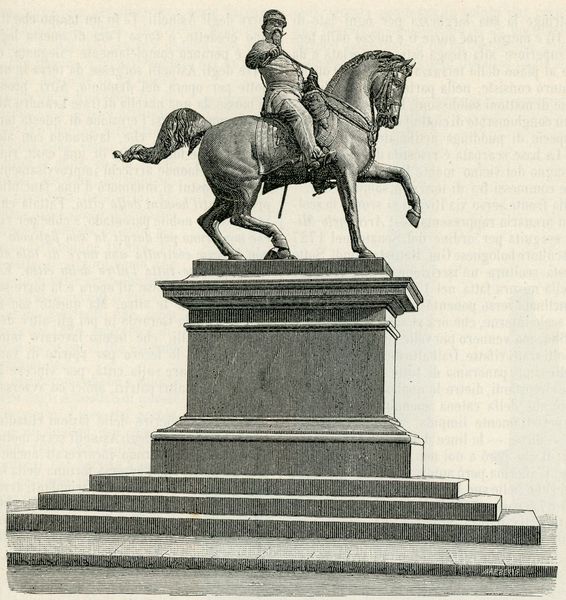
Dimensions: frame: 74.3 Ã 56.5 Ã 5.7 cm (29 1/4 Ã 22 1/4 Ã 2 1/4 in.) rabbet: 55.9 Ã 38.7 cm (22 Ã 15 1/4 in.) sight: 54.6 Ã 36.8 cm (21 1/2 Ã 14 1/2 in.)
Copyright: CC0 1.0
Curator: Here we have Joseph Smith’s rendering of the Statue of Marcus Aurelius, after antiquity, now residing at the Harvard Art Museums. Editor: It's striking, isn't it? The monochrome palette gives it a stoic, almost ghostly presence. The texture seems rough, aged. Curator: Indeed. Smith's work, though recent, taps into the enduring symbolism of Roman power. The equestrian statue itself signifies leadership and imperial control. Editor: The horse, though a symbol of power, appears almost gentle here. Marcus Aurelius' gesture, some suggest, is one of clemency, not aggression. It’s a fascinating contrast. Curator: That resonates with the philosophical emperor. What do you make of the inscriptions surrounding the figures? Editor: Ah, the text! It’s a fascinating inclusion, embedding the image within layers of historical and cultural significance. It connects the statue to its original intent and its subsequent rediscovery. Curator: Exactly. It invites us to consider how meaning evolves over time, influenced by political and social contexts. Editor: Well, it definitely makes you reflect on the enduring power of images to evoke complex narratives. Curator: Absolutely. The statue speaks volumes about leadership, legacy, and the passage of time itself.
Comments
No comments
Be the first to comment and join the conversation on the ultimate creative platform.
